|
BBC Radio 4 Today programme feature - April 30 2009 7.46 am (4.05 mins) |
Film Soundtracks The Cabinet of Doctor Caligari - Phantom of the Opera - The Last Laugh - The Lodger - Pandora's Box
The Cabinet of Doctor Caligari
The Cabinet of Dr Caligari is one of the earliest, most influential and most artistically acclaimed German Expressionist films. The film tells the story of the deranged Dr. Caligari and his faithful sleepwalking Cesare, and their connection to a string of murders. Critics worldwide have praised the film for its expressionist style, complete with wild, distorted set design including crooked buildings and twisted landscapes. The film also boasts one of the first attempts at a twist ending, something quite new and shocking for its time.
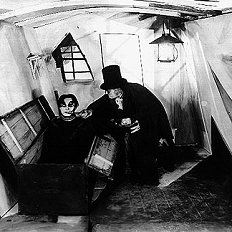
This is a genuinely creepy film which delves deep into the mysteries of the abnormal mind...an uncomfortable journey to say the least. Everyone is suspect and, in the end, we must ask ourselves: "who is really the mad one here?"
Subtle and ingenious, we see the world the way an insane person might see it; warped and confused, a nightmarish terrain where nothing makes sense and balance is not to be found.
The impact of this film is still being felt and seen today, and for good reason. Caligari has been cited as an influence on film noir, one of the earliest horror films, and a model for directors for many decades. It is a shocking, disturbing masterpiece.
Cipher's score incorporates hypnotic low flutes, haunting saxophones, dark soundscapes, pulsing beats, deep bass and rich textural landscapes.
Observations: Weird sounds emanate from the cabinet of Dr Caligari
By Elisa Bray. Independent
It's the most influential of German Expressionist films. Now, to mark the 90th anniversary of the making of The Cabinet of Dr Caligari, the electro-jazz duo Cipher have composed a new soundtrack to accompany its nightmarish scenes.
Updating the tradition of live pianists in cinemas, the duo are performing the new score live as the silent film is screened in its original hand-tinted version across the country this month. Cipher's Theo Travis plays haunting soprano saxophone, flute and keys, and Dave Sturt plays fretless bass while using pedals to produce the sounds that create their layered, dark, atmospheric music.
Director Robert Wiene's 1920 film tells the tale of Dr Caligari, a hypnotist who travels the carnival circuit with somnambulist Cesare. When a series of murders coincides with the pair's visit, it appears the hypnotist has been ordering Cesare to commit the murders. But is all as it seems?
Cipher have a history of writing scores for sinister films, including Alfred Hitchcock's The Lodger and Blackmail, FW Murnau's The Last Laugh, and GW Pabst's Pandora's Box in their repertoire.
Travis explains: "We tend to pick films that are dark to write new music for. It's about capturing the mood of the film with a mixture of improvisation and composition. The Cabinet of Dr Caligari is one of the most moody and dramatic films ever made, one that continues to exert a huge influence on film-makers".
Phantom of the Opera
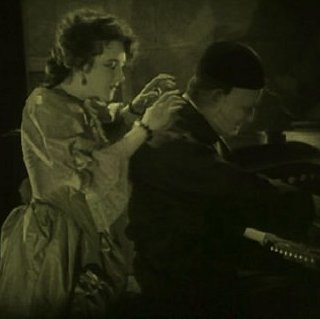
"The 1925 silent film version of The Phantom of the Opera, directed by Rupert Julian, is a classic adaptation of the novel by Gaston Leroux. It stars Lon Chaney in the title role as the masked and facially disfigured 'Phantom'. It is a masterpiece of horror that shocked cinema for decades.
This grand atmospheric melodrama with itís balance of terror and tragedy provides a perfect vehicle for the dark ambient jazz soundscapes of Cipher who premiered their live score to the film at the Bradford International Film Festival 2008 and then toured it around cinemas in the UK
During the latter decades of the Victorian Era, the great Paris Opera is troubled with whispers of a ghost--a frightening specter which visits misfortune on the company should they fail to please him. Up-and-coming singer Christine Daae (Mary Philbin), meanwhile, is more preoccupied with her singing tutor--a disembodied voice she believes to be an emissary from her dead father, who guides her to new heights but demands she put her music above all else, including and especially her handsome childhood sweetheart Raoul (Norman Kerry). Neither Phantom nor tutor is a spirit in truth, but are two different sides of the same man--a horribly disfigured, unnaturally gifted, and frighteningly passionate man, but a man nonetheless. The film is most famous for Lon Chaney's intentionally horrific, self-applied make-up, which was kept a studio secret until the film's premiere.
The impressive sets of the Paris Opera House and the catacombs, the color footage, and the lavish costuming all add to the atmosphere of the film, yet they pale next to Chaney's performance. This was truly the masterpiece of Chaney's career and ranks as one of the greatest tour-de-force performances of the silent era.
Jon C. Mirsalis. Sandman Magazine
Blackmail
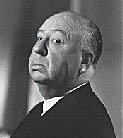
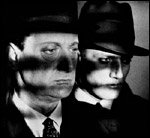
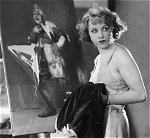
Conceived and shot in 1928, Blackmail was the first sound film to be produced in Britain. While Blackmail was originally shot as a silent film, Hitchcock was interested in the new sound technology and re-shot numerous scenes, dubbed the dialogue and ultimately produced a second version of Blackmail. For these screenings, Cipher presents the rarer, silent version of the Hitchcock's masterpiece, which is believed to be the best version.
F.W. Murnau's The Last Laugh (Der letzte Mann) 1924.

Murnau's silent film The Last Laugh tells the tragic story of a self-confident hotel porter, brilliantly portrayed by Emil Jannings, who is demoted to lavatory attendant. The porter's entire identity is based upon his position and especially on his uniform, which symbolizes power and respectability to his lower-middle-class community of family and friends. The film's most shocking and brutal moment comes when the hotel manager unrelentingly strips the pleading porter of his uniform; it is as if the porter's skin were being ripped off. But this is only the beginning of his trials. The film's unexpected deus-ex-machina ending tries to whitewash the porter's suffering, but his tragic decline remains unforgettable.
Dispensing with the customary intertitles, and filming while moving the camera in extraordinarily inventive ways, Murnau and his cinematographer, Karl Freund, transformed the language of film. In shooting the opening sequence, the camera descended in the hotel's glass elevator and was then carried on a bicycle through the lobby. In addition, The Last Laugh succeeds in combining expressionist elements, such as extreme camera angles, distorted dream imagery, and disturbing light and shadow effects, with a complex psychological study of the main character in his fall from privilege.
Financial assistance from Arts Council East Midlands
Alfred Hitchcock - The Lodger
1926 classic featuring Ivor Novello.
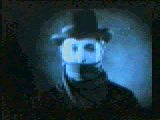 Alfred Hitchcock - Blackmail 1929 a film of which a silent and a sound version exists. More murder and intrigue set in London. A famous chase scene in the British Library finishes this classic.
Alfred Hitchcock - Blackmail 1929 a film of which a silent and a sound version exists. More murder and intrigue set in London. A famous chase scene in the British Library finishes this classic.
Karl Valentin - The Mysteries of the Hairdressers Salon 1922 . Karl Valentin was a peer of Charles Chaplin and a stage and music hall comedian who transferred to the screen to a mixed reception. His films are humorous but with a strange and almost gothic element, for example in the Mysteries of the Hairdresser's Salon the hairdresser accidentally cuts off the head of one of his customers. The head subsequently shuffles away before eventually being found and reattached its body!
Karl Valentin - The New Desk 1915. A ten minute short of a hilarious music hall sketch translated to celluloid.
G.W.Pabst - Pandora's Box 1929.

Voted one of the greatest silents of all time in a Time Out poll, as a study of amoral eroticism, obsession and despair, G W Pabst's silent masterpiece is second to none. An adaptation of two plays by German playwright Frank Wedekind, Pandora's Box deals with the tale of Lulu, high-class prostitute and mistress of a well-known local businessman. Lulu's insatiable sexual desires and disregard for traditional morality results in a string of death, envy, greed and despair, culminating in her own death at the hands of Jack the Ripper. Scandalous at the time, the tale is still powerful, and as a comment on the decay of German society at the end of the 1920s it is very strong indeed.
What makes Pandora's Box even more notable however is its main star. Lulu is played by silent screen legend Louise Brooks, the beautiful and mesmeric star that defined the look of the era. Brooks represents unrelenting and unremorseful sensuality, easily becoming the screen's first truly empowered woman. From the sharp bob of her raven black hair to the pointiness of her lipliner to the devilish sparkle in her eye, Brooks lights up the screen every moment she's on it. No-one in the film is immune to her charms: even the prosecution lawyer demanding her death is affected by her medusa-like gaze for a moment. Wrapping men and - in a notorious yet elegantly shot scene - women around her finger as though toying with some lesser species, Lulu uses those she meets for her own pleasure and satisfaction, leaving hollow shells of people behind in her wake. By the end of the film, she has put so much into the character of Lulu that her death becomes something intensely moving and sad, especially given the violence of its fashion. The final scenes of Pandora's Box are some of the most intense and erotic ever filmed, as we see Lulu unwittingly invite her killer into her room, embracing him as she embraces her end.



